
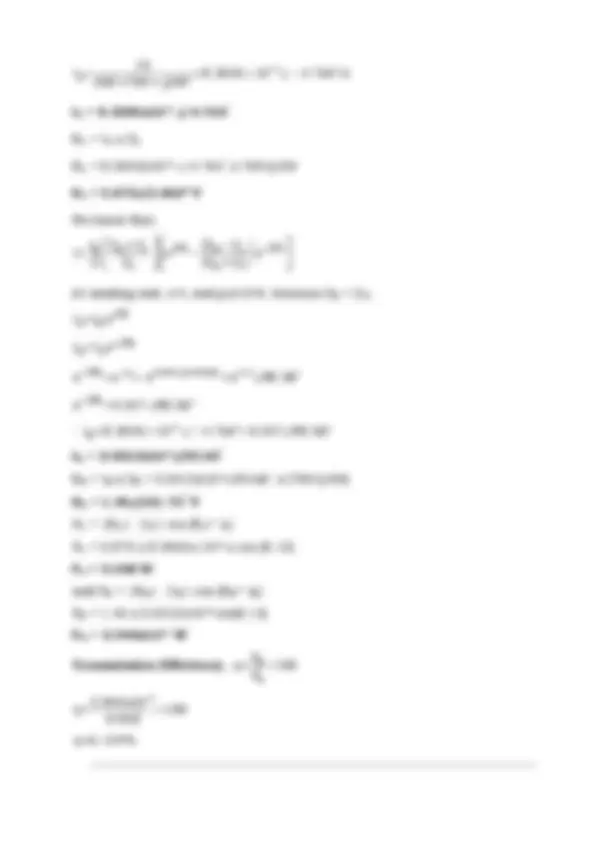
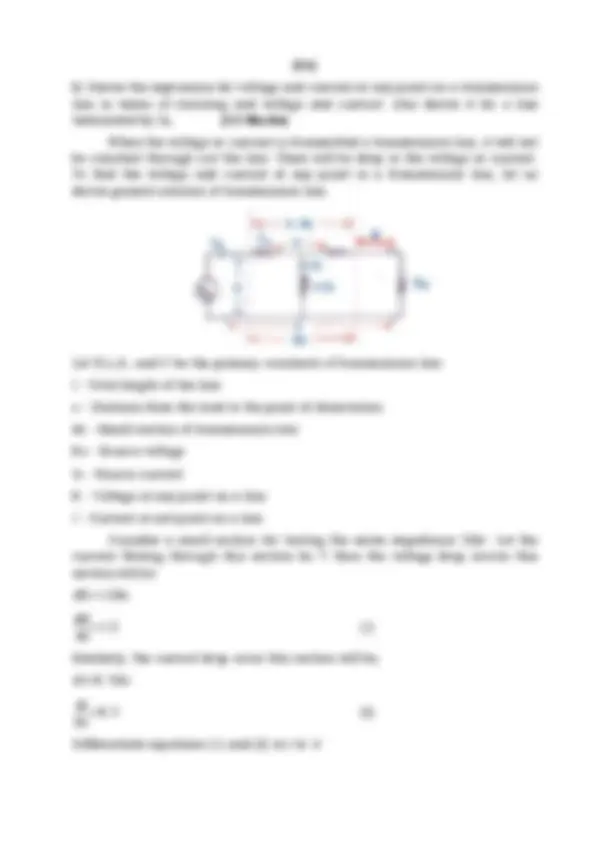
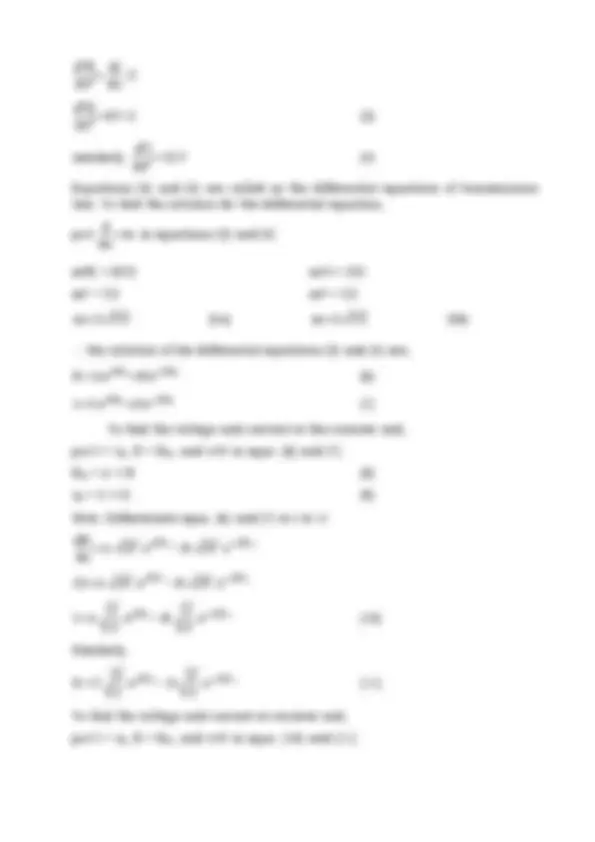
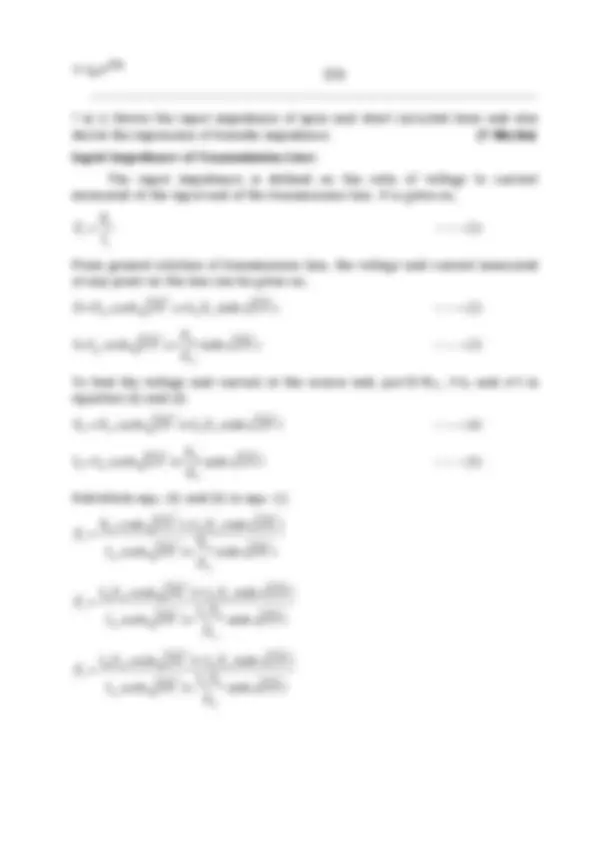
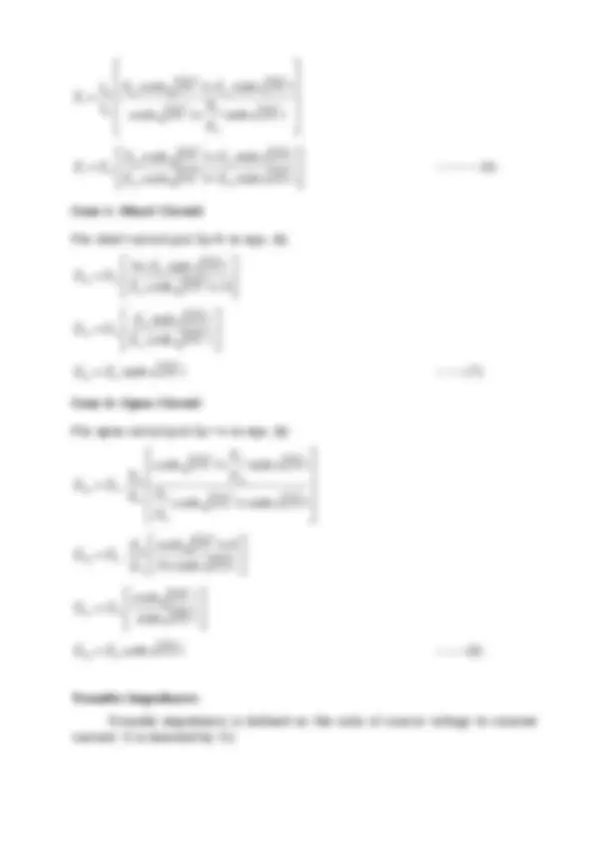
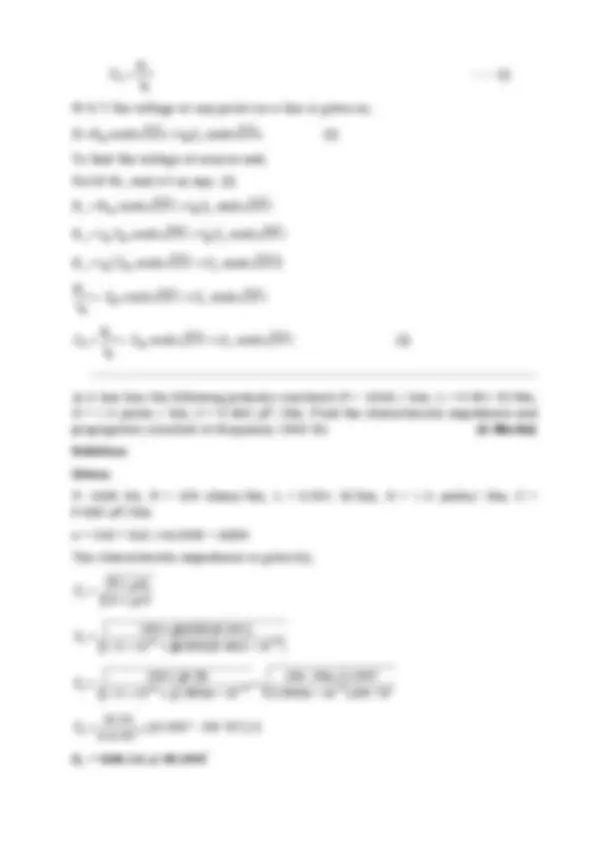
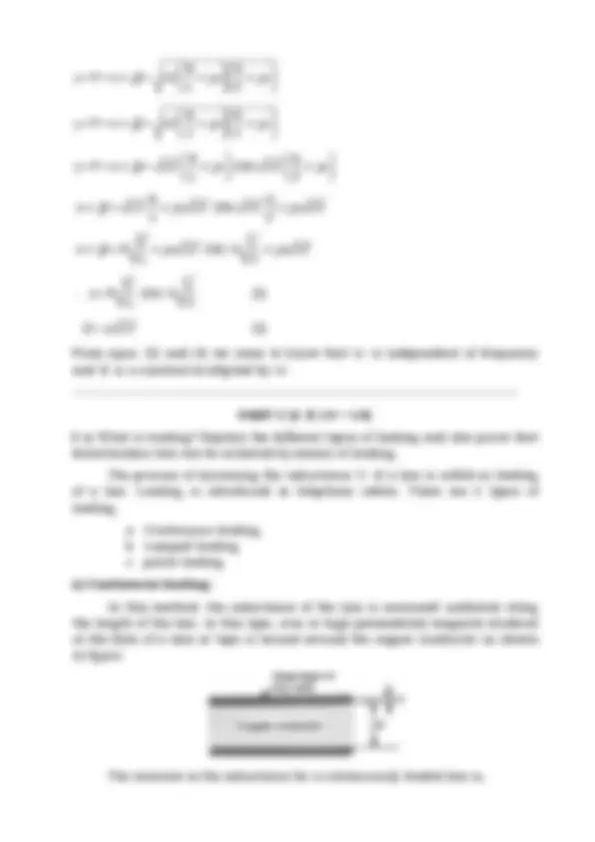
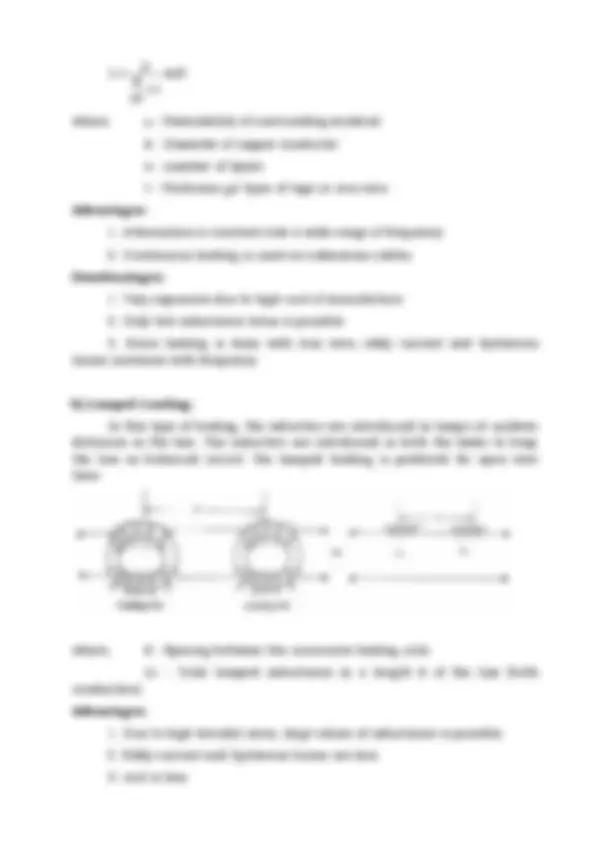
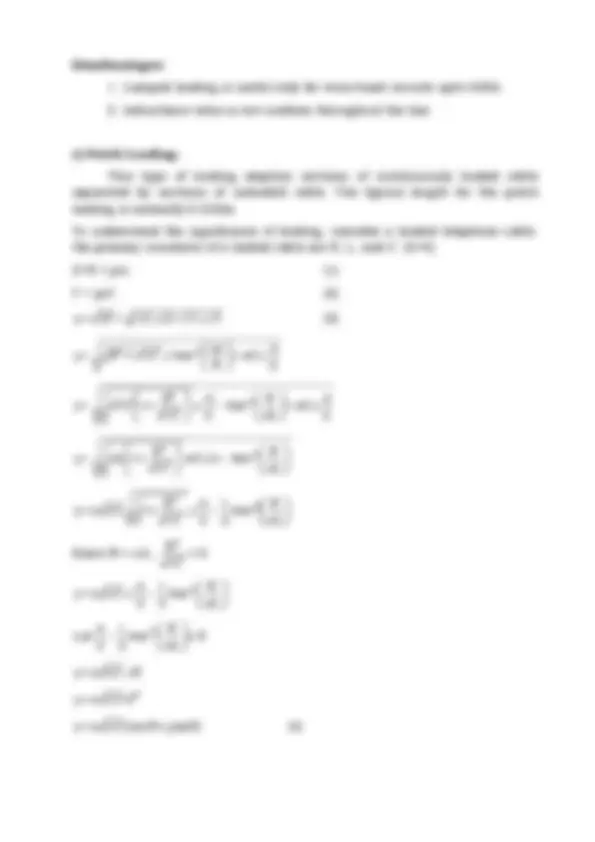
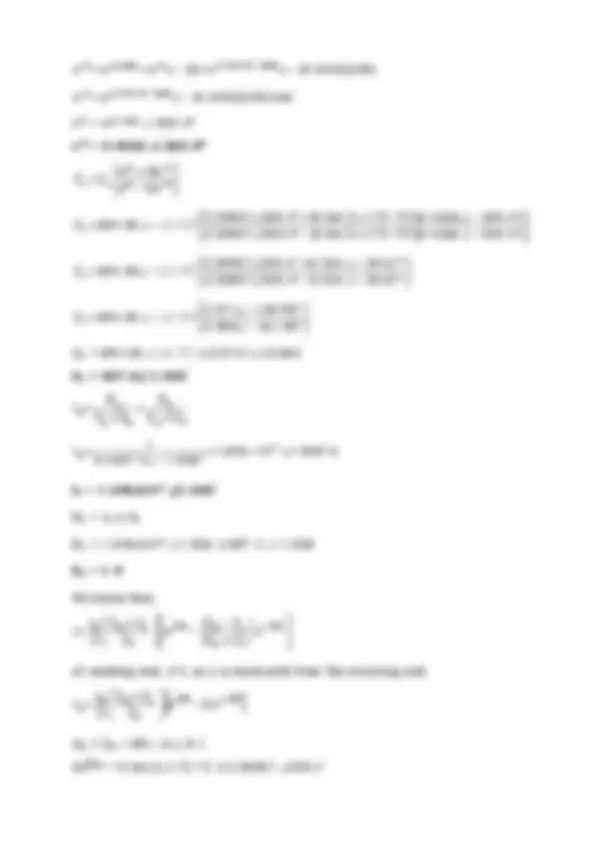
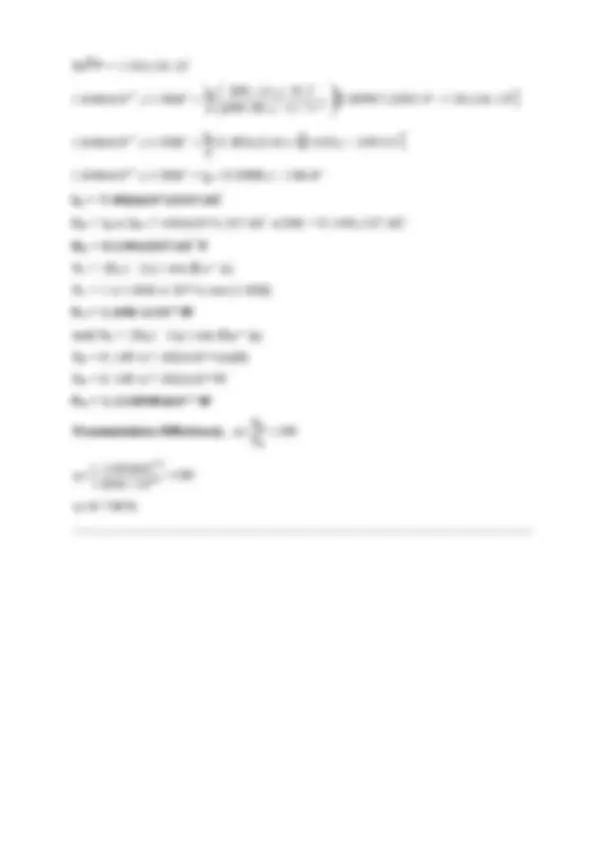


Study with the several resources on Docsity

Earn points by helping other students or get them with a premium plan


Prepare for your exams
Study with the several resources on Docsity

Earn points to download
Earn points by helping other students or get them with a premium plan
Community
Ask the community for help and clear up your study doubts
Discover the best universities in your country according to Docsity users
Free resources
Download our free guides on studying techniques, anxiety management strategies, and thesis advice from Docsity tutors
static latches and registers hand written notes
Typology: Lecture notes
1 / 19

This page cannot be seen from the preview
Don't miss anything!












Date: Max. Marks: 50
Class: III ECE A, B, C, D & E Duration: 2 Hours
In a uniform transmission line it is the ratio of the voltage amplitude to
the current amplitude of a single wave traveling down it. This is also called
as “Surge impedance”.
The impedance measured at any point in a transmission line is called
as characteristic impedance. It is denoted as Zo.
It is given by, Zo = Y
G j C
R j L
ω
ω ohms/Km.
When the load impedance (ZR) is not equal to the characteristic
impedance (Zo) of transmission line (i.e., ZR ≠ Zo), reflection takes place.
Reflection occurs because of the following cases:
when the load end is open circuited
when the load end is short-circuited
when the line is not terminated in its characteristic impedance
line whose propagation constant is
4 × ∠
−
γ = α+jβ = 1.048x10-4∠88.8°
= 2.1947x10-6^ + j1.04777x10-
α = 2.1947x10-6^ Np/m
β = 1.04777x10-4^ rad/m
Reflection Coefficient can be defined as the ratio of the reflected voltage or
current to the incident voltage or current at the receiving end of the line.
It is denoted by ‘K’ or ‘r’ or ‘ρ’
Reflection Coefficient, K = Incidentvoltageorcurrentattheload
ReflectedVoltageorcurrentatload
K = Vr/Vi
R O
R O
Z Z
terminated by a load impedance of (60 + j40) ohm.
Solution:
ZR = (60+j40)Ω
The reflection coefficient is given by,
110 j 40
10 j 40
( 60 j 40 ) 50
( 60 j 40 ) 50
Z Z
R O
R O
6.a) An open wire line which is 200 Km long is properly terminated. The
generator at the sending end has V = 10V, f = 1 KHz and internal impedance of
500 Ω. At that frequency, the characteristic impedance of the line is (700+
j100) ohms and γ=0.007+j0.04 per Km. Determine the sending end voltage,
current and power and the receiving end voltage, current and power.
(13 Marks)
Solution:
Given:
Eg = 10V, f= 1000 Hz, l=200 Km, ZR = ZO, ZO = 700 +j 100 ohms, ZS = ZO,
γ=0.007+j0.
ω = 2πf = 2x3.14x1000 = 6280
g S
g
g in
g S Z Z
(Or)
b) Derive the expression for voltage and current at any point on a transmission
line in terms of receiving end voltage and current. Also derive it for a line
terminated by Z 0. (13 Marks)
When the voltage or current is transmitted a transmission line, it will not
be constant through out the line. There will be drop in the voltage or current.
To find the voltage and current at any point in a transmission line, let us
derive general solution of transmission line.
Let R,L,G, and C be the primary constants of transmission line
l - Total length of the line
s - Distance from the load to the point of observation
ds - Small section of transmission line
Es - Source voltage
Is - Source current
E - Voltage at any point on a line
I - Current at ant point on a line
Consider a small section 'ds' having the series impedance 'Zds'. Let the
current flowing through this section be 'I' then the voltage drop across this
section will be
dE =I. Zds
ds
dE = (1)
Similarly, the current drop cross this section will be,
dI =E. Yds
ds
dI = (2)
Differentiate equations (1) and (2) w.r.to 's'
ds
dI
ds
d E 2
ds
d E 2
2 = (3)
similarly, IZ.Y ds
d I 2
2 = (4)
Equations (3) and (4) are called as the differential equations of transmission
line. To find the solution for the differential equation,
put m ds
d = in equations (3) and (4)
m^2 E = EYZ
m^2 = YZ
m = ± YZ (5a)
m^2 I = IYZ
m^2 = YZ
m = ± YZ (5b)
∴ the solution of the differential equations (3) and (4) are,
ZYs ZY s E Ae Be
− = + (6)
ZYs ZY s I Ce De
− = + (7)
To find the voltage and current at the receiver end,
put I = IR, E = ER, and s=0 in equs. (6) and (7)
Now, Differentiate equs. (6) and (7) w.r.to 's'
ZY .s ZY. s A. ZY.e B. ZY.e ds
dE (^) − = −
ZY .s ZY. s IZ A. ZY.e B. ZY.e
− = −
ZY. s ZY. s .e Z
.e B. Z
− = − (10)
Similarly,
ZY .s ZY. s .e Y
.e D. Y
− = − (11)
To find the voltage and current at receiver end,
put I = IR, E = ER, and s=0 in equs. (10) and (11)
− ZYs
R
R o
R
R o
ZYs
R
R o e
e Z
− ZYs
R o
ZYs R o
R
R R o e Z Z
e Z
ZYs ZYs
R
R R o e Ke
Z
−
ZYs ZYs
o
R R o e Ke
Z
− −
where,
R O
R O
Z Z
Equations (18) and (19) are the useful equations of transmission line.
The differential Equations (6) and (7) can also be solved as,
ZY s
R
ZYs R o
R
R o e Z
e Z
−
ZY s
R
ZYs R ZYs R o
R
R ZYs R o e Z
e 2
e Z
e 2
− − = + + −
R R
R ZYs R o ZYs R ZYs R o ZYs R I
Z
e 2
e 2
e 2
e 2
− −
R ZYs R ZYs R o ZYs R o ZY^ s e 2
e 2
e 2
e 2
− − = + + −
R ZYs ZYs R o ZYs ZYs e e 2
e e 2
− − = + + −
E = ER cosh ZYs+IRZosinh ZY s (20)
Similarly, sinh ZYs Z
I I cosh ZYs o
R = (^) R + (21)
When line is terminated by Zo, the general solution becomes,
ZR = Zo, K=
ZYs ZYs
o
R o o e 0 .e
Z
−
ZY s E = ER e (22)
ZYs I = IR e (23)
7.a) i) Derive the input impedance of open and short circuited lines and also
derive the expression of transfer impedance. (7 Marks)
Input Impedance of Transmission Line:
The input impedance is defined as the ratio of voltage to current
measured at the input end of the transmission line. It is given as,
s
s
From general solution of transmission line, the voltage and current measured
at any point on the line can be given as,
O
R
To find the voltage and current at the source end, put E=ES, I=IS and s=l in
equation (2) and (3)
O
R
Substitute equ. (4) and (5) in equ. (1)
O
R R
R R O s
O
R R R
R R R O s
O
R R R
R R R O s
R
s T = −−−
W.K.T the voltage at any point on a line is given as,
E = ER cosh ZYs+IRZosinh ZY s (2)
To find the voltage at source end,
Put E=Es and s=l in equ. (2)
E (^) s =ERcosh ZYl+IRZosinh ZY l
E (^) s =IRZRcosh ZYl+IRZosinh ZY l
E (^) s =IR ( ZRcosh ZYl+Zosinh ZYl)
Z cosh ZYl Z sinh ZY l I
R o R
s = +
Z cosh ZYl Z sinh ZY l I
Z (^) R o R
s T =^ = + (3)
ii) A line has the following primary constants R = 100Ω / km, L = 0.001 H/Km,
G = 1.5 μmho / Km, C = 0.062 μF /Km. Find the characteristic impedance and
propagation constant at frequency 1000 Hz. (6 Marks)
Solution:
Given:
f= 1000 Hz, R = 100 ohms/Km, L = 0.001 H/Km, G = 1.5 μmho/ Km, C =
0.062 μF/Km
ω = 2πf = 2x3.14x1000 = 6280
The characteristic impedance is given by,
G jω C
R jωL Z (^) o
100 j( 6280 )( 0. 001 ) Z (^) o (^) − 6 − 6 × + ×
100 j 6. 28 Z (^) o (^644) × ∠
Z (^) o
= ∠ −
Zo = 508.12 ∠ -43.
°
The propagation constant is given by,
P γ ( 100 j( 6280 )( 0. 001 )) ( 1. 5 10 j( 6280 )( 0. 062 10 ))
− 6 − 6 = = + × × + ×
P γ ( 100 j 6. 28 ) ( 1. 5 10 j 3. 8936 10 ))
− 6 − 4 = = + × × + ×
P γ 100. 196 3. 593 3. 8936 10 89. 78
4 = = ∠ × × ∠
−
P γ 100. 196 3. 8936 10 89. 78 3. 593
4 = = × × ∠ +
−
P= γ = 0.1975 ∠ 46.687 °
(Or)
b) i) The characteristic impedance of a uniform transmission line is 2039.5 Ω
at a frequency of 800 Hz. At this frequency the propagation constant was
found to be 0.054∠87.
° Determine the values of primary constants. (6 Marks)
Solution:
Given:
Zo=2309.6 Ω , f=800Hz, P=γ=0.054∠87.
°
ω = 2πf = 2 x 3.14 x 800 = 5024
R=jωL = ZoP = 2309.6 x 0.054∠87.
°
= 4.57+j124.
Comparing real and imaginary terms,
R = 4.57 ohms/Km
ωL = 124.
L=24.8 mH/Km
Similarly,
γ G jω C o
∠
7 5 G jωC 8. 5675 10 j 2. 3365 10
− −
Comparing real and imaginary terms,
G = 8.5675x10-7^ mho/Km
ωC = 2.3365x10-
= = + = + jω C
j ω L
γ P α jβ LC
= = + = + jω L
j ω L
γ P α jβ LC
= = + = + jω C
jω (Or) LC L
γ P α jβ LC
jω LC C
jω LC (Or) LC L
α +jβ= LC + +
jω LC C
jω LC(Or)G L
α +jβ=R + +
(Or)G L
∴ α =R (2)
β = ω LC (3)
From equs. (2) and (3) we come to know that 'α' is independent of frequency
and 'β' is a constant multiplied by 'ω'.
8.a) What is loading? Explain the different types of loading and also prove that
distortionless line can be achieved by means of loading.
The process of increasing the inductance 'L' of a line is called as loading
of a line. Loading is introduced in telephone cables. There are 3 types of
loading.
a. Continuous loading
b. Lumped loading
c. patch loading
a) Continuous loading:
In this method, the inductance of the line is increased uniformly along
the length of the line. In this type, iron or high permeability magnetic material
in the form of a wire or tape is wound around the copper conductor as shown
in figure.
The increase in the inductance for a continuously loaded line is,
mH
1 nt
d
μ L
where, μ - Permeability of surrounding material
d - Diameter of copper conductor
n - number of layers
t - Thickness gir layer of tape or iron wire
Advantages:
Disadvantages:
losses increases with frequency
b) Lumped Loading:
In this type of loading, the inductors are introduced in lumps at uniform
distances in the line. The inductors are introduced in both the limbs to keep
the line as balanced circuit. the lumped loading is preferred for open wire
lines.
where, d - Spacing between two successive loading coils
Lc - Total lumped inductance in a length d of the line (both
conductors)
Advantages:
To find cos θ :
−
ω L
π cos ωL
tan 2
π cos
1
2 ω L
ωL
sin (^) =
To find Sin θ :
−
ω L
π sin ωL
tan 2
π sin
1
ωL
cos (^) ≈
Therefore equ. (4) can be written as,
= +j 1 2 ωL
γ ω LC
jω LC L
α +j β= +
By equating the real and imaginary terms, we get
β
ω ,β ω LCand v L
α = = p = =
From the above expressions, it is obvious that by increasing the
inductance value, distortionless line can be achieved.
(Or)
b) A generator of 1V, 1000 cycles, supplies power to a 100 mile open wire line
terminated in 200 ohms resistance. The line parameters are R = 10.4 ohms per
mile, L = 0.00367 Henry per mile, G =
6
− × mho per mile, C = 0.00835 μF
per mile. Determine the following parameters; Reflection coefficient , Sending
end impedance, Sending end current, Receiving end current, Receiving end
voltage, Input power, Power delivered to the load and Efficiency of
transmission line.
Solution:
Given:
Eg = 1V, f=1000 cycles = 1000 Hz, l=100 mile, ZR = 200 ohms, R = 10.
ohms/mile, L = 0.00367 H/mile, G = 0.8 x10-6^ mho/ mile, C = 0.
μF/mile
ω = 2πf = 2x3.14x1000 = 6280
The characteristic impedance is given by,
G jω C
R jωL Z (^) o
8 10 j( 6280 )( 0. 00835 10 )
4 j( 6280 )( 0. 00367 ) Z (^) o (^) − 6 − 6 × + ×
8 10 j 5. 2438 10
4 j 23. 0476 Z (^) o (^655) × ∠
Z (^) o 3
∠ − ×
Zo = 694.38 ∠ -11.
°
The propagation constant is given by,
P γ ( 10. 4 j( 6280 )( 0. 00367 )) ( 0. 8 10 j( 6280 )( 0. 00835 10 ))
− 6 − 6 = = + × × + ×
( ) ( )
6 5 P γ 10. 4 j 23. 0476 0. 8 10 j 5. 2438 10
− − = = + × × + ×
P γ 25. 285 65. 713 5. 244 10 89. 126
5 = = ∠ × × ∠
−
P γ 1. 326 10 65. 713 89. 126
3 = = × ∠ +
−
P= γ = 0.0364 ∠ 77.42 ° (Or) 7.928x10-3+j0.
α = 7.928x10-
β = 0.
R O
R O
e e e βl e ( 0. 0355 )( 100 )
γl (α jβ)l αl ( 7. 928103 )( 100 ) = = ∠ = ∠
e e ( 0. 0355 )( 100 )
γl ( 7. 928103 )( 100 ) = ∠
× − rad
e
γl = e0.7928^ ∠203.4°
e
γ l = 2.20957 ∠ 203.4 °
Ke
√ZYl = 1.24∠16.
°
[ ]
1.646x10 1.
( )[ ]
1.646x10 1.026 R
1.646x10 1.026 IR 2. 2088 156. 6
IR = 7.452x10-4 ∠ 157.
°
ER = IR x ZR = 7.452x10-4∠157.
° x 200 = 0.149∠157.
°
° V
PS = |ES|. |IS|.cos (ES^ IS)
PS = 1 x 1.646 x 10-3^ x cos (1.026)
PS = 1.646 x 10-3^ W
and PR = |ER|. |IR|.cos (ER^ IR)
PR = 0.149 x 7.452x10-4^ cos(0)
PR = 0.149 x 7.452x10-4^ W
PR = 1.110348x10-4^ W
Transmission Efficiency, 100 P
η S
R = ×
4 × ×
−
η = 6. 746 %